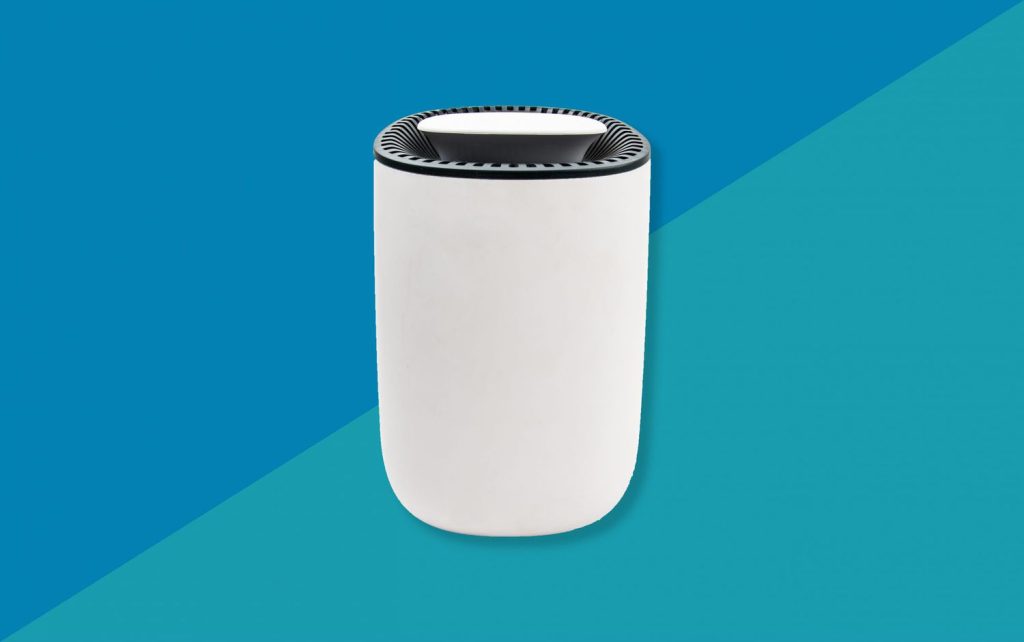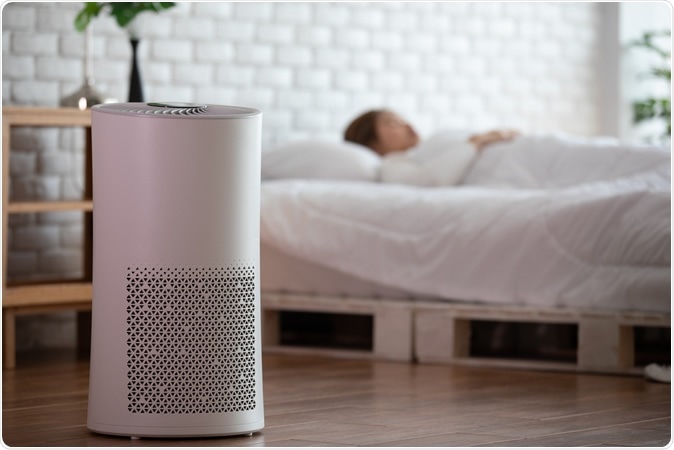In this article (Can Air Purifiers Help With Managing Respiratory Conditions In Children), we examine the possible advantages of air cleaners for treating children’s respiratory disorders. It is only natural to look for practical solutions when it comes to our children’s health and wellbeing. Many parents are looking to air purifiers as a potential answer due to worries about the quality of the air and how it may affect respiratory health. We’ll look at how air purifiers operate, potential advantages, and whether they may actually help children with respiratory issues.

Types of Respiratory Conditions in Children
Asthma
An ongoing respiratory disorder that damages the lungs’ airways called asthma. It leads to symptoms including wheezing, coughing, tightness in the chest, and shortness of breath by causing inflammation and narrowing of the airways. Numerous things, such as allergens, irritants, exercise, and viral infections, can cause asthma.
Allergies
Another prevalent respiratory problem in youngsters is allergies. Individuals with delicate immune systems may experience allergic reactions to allergens such pollen, dust mites, pet dander, and mold. Sneezing, runny nose, itchy or watery eyes, and congestion are among the many allergy symptoms that might vary. If untreated, allergies can have a severe negative effect on a child’s quality of life and even cause respiratory problems.
Bronchitis
The bronchial tubes, which transport air to and from the lungs, become inflamed when someone has bronchitis. It falls into the acute or chronic categories. Chronic bronchitis is frequently linked to prolonged exposure to irritants, such as cigarette smoke, while acute bronchitis is typically brought on by viral infections. Coughing, mucous production, chest discomfort, and shortness of breath are all signs of bronchitis.
How Air Purifiers Work
By removing dangerous particles and pollutants from the air, air purifiers are tools used to enhance the quality of indoor air. They function by capturing and removing impurities using a variety of filtration techniques, enhancing the room’s overall air quality.
Filtration Process
Filters are commonly used in the filtration process of air purifiers to capture airborne particles. High-Efficiency Particulate Air (HEPA) filters are the most popular kind of filter found in air purifiers. Dust, pollen, pet hair, mold spores, and certain germs are just a few of the minute particles that HEPA filters can capture.
Other filter types used in air purifiers are ultraviolet (UV) filters, which can kill airborne pathogens including viruses and bacteria, and activated carbon filters, which can absorb odors and certain pollutants.
Types of Air Purifiers
There are various different kinds of air purifiers on the market, each with special features and filtering systems of its own. Typical types include:
- HEPA Air Purifiers: These purifiers use HEPA filters to capture a wide range of particles and are highly effective in removing allergens and irritants from the air.
- Activated Carbon Air Purifiers: These purifiers are particularly effective in removing odors and chemicals from the air, as the activated carbon filters can adsorb these substances.
- UV Air Purifiers: These purifiers use UV light to kill bacteria, viruses, and other pathogens in the air. They are often used in medical settings to prevent the spread of infections.
- Ionic Air Purifiers: These purifiers use ions to charge particles in the air, causing them to stick to surfaces such as walls or filters. However, their effectiveness in improving air quality is still a subject of debate.
Effectiveness of Air Purifiers
Children’s respiratory issues can often be effectively managed with the use of air purifiers. They provide a number of advantages that might lessen symptoms and enhance general respiratory health.
Reducing Indoor Air Pollution
Respiratory health can be significantly impacted by indoor air pollution. Dust, pet dander, pollen, and mold spores are examples of typical indoor pollutants that can exacerbate respiratory problems and cause allergic reactions. Children can breathe cleaner air thanks to air purifiers, especially ones with HEPA filters, which can effectively remove harmful particles from the air. This lowers the total level of indoor air pollution.
Minimizing Triggers
Exposure to particular triggers can exacerbate symptoms in kids with respiratory diseases like asthma and allergies and cause respiratory flare-ups. By capturing and removing these triggers from the air, air purifiers can reduce exposure to them. Air purifiers can aid in the relief of symptoms and prevention of respiratory exacerbations by lowering the presence of allergens and irritants.
Improving Air Quality
Maintaining good respiratory health requires clean air. By removing pollutants, air purifiers can enhance air quality, ensuring a better environment for kids with respiratory disorders. Cleaner air can enhance children’s overall lung health, lessen the likelihood of respiratory infections, and reduce respiratory symptoms.
Choosing the Right Air Purifier
There are a number of things to take into account while choosing an air purifier to treat children’s respiratory issues.
Consideration Factors
- Room Size: Choose an air purifier that is suitable for the size of the room where it will be used. Larger rooms may require more powerful air purifiers to effectively clean the air.
- Filtration System: Look for air purifiers with HEPA filters, as they are highly efficient in capturing allergens and other airborne particles. Consider additional filtration features such as activated carbon or UV filters, depending on specific needs.
- Noise Level: Consider the noise level of the air purifier, especially if it will be used in a bedroom or study area. Look for models with adjustable fan speeds or quiet operation modes.
- Energy Efficiency: Evaluate the energy consumption of the air purifier to ensure it is energy-efficient and won’t add significantly to your electricity bills.
Effectiveness for Specific Conditions
Specific functions in an air purifier may be needed for various respiratory disorders. A HEPA filter and activated carbon filters in an air purifier, for instance, can effectively eliminate allergens and odors for people with allergies. To get rid of pathogens and lower the risk of respiratory infections, people with asthma may also want to think about an air purifier with UV filters.

Positioning Air Purifiers for Maximum Benefit
For air purifiers to be as efficient as possible in treating children’s respiratory disorders, they must be installed properly.
Proper Placement
Place the air purifier in the bedroom or playroom, or wherever the youngster spends the most time. To ensure that clean air is distributed evenly throughout the space, place the air purifier in the middle of the room.
Avoiding Obstructions
Avoid positioning the air purifier close to objects that can hinder the airflow, such as furniture or drapes. By doing this, the purifier will be able to trap airborne pollutants more successfully and circulate the air more effectively.
Maintenance and Cleaning of Air Purifiers
To guarantee the best performance from air purifiers, regular upkeep and cleaning are required.
Filter Replacement
Follow the recommended filter replacement intervals listed in the manufacturer’s instructions. Depending on usage and the amount of pollutants in the environment, most filters need to be updated every 6 to 12 months.
Regular Cleaning
To prevent dust and debris buildup, regularly clean the air purifier’s exterior. To clean the surface, use a soft, wet cloth rather than abrasive cleaners or harsh chemicals that could harm the purifier.

Additional Measures for Managing Respiratory Conditions
Although air purifiers can help manage children’s respiratory issues, it’s necessary to take additional precautions to maintain a clean and healthy atmosphere.
Maintaining Clean Environment
Vacuum and clean the living areas frequently to reduce dust and allergens. Do not allow plush animals, rugs, or other materials that may contain dust mites or allergens in the child’s bedroom.
Reducing Exposure to Allergens
Determine which allergens cause respiratory problems so that you can reduce your exposure to them. This may entail using hypoallergenic bedding, keeping pets out of particular areas, and covering mattresses and pillows with dust mite-proof covers.
Regular Ventilation
For the purpose of ensuring optimum indoor air quality, proper ventilation is necessary. Utilize exhaust fans in the kitchen and bathroom to remove pollutants, open windows to bring in fresh air, and make sure there is enough ventilation in the living areas.
You may also like to read the article: Do Home Air Purifiers Have Any Impact On Mold And Mildew?
Consulting with a Healthcare Professional
It is crucial to seek the counsel and direction of a healthcare professional while addressing respiratory disorders in children.
Seeking Medical Advice
For advice on how to manage your child’s unique respiratory issue, speak with a doctor or a respiratory expert. They can offer individualized advice and treatment choices catered to your child’s requirements.
Considering Individual Needs
Every child has a different respiratory issue, so their treatment strategy should be tailored to them. When speaking with a healthcare expert, take into account any particular requirements and worries to ensure your child receives the best treatment possible.

Potential Drawbacks of Air Purifiers
Although air purifiers can be quite helpful, there are a few potential negative aspects to take into account.
Noise Level
Some air purifiers, especially those with faster fan speeds, may make noise. To decide whether a purifier is appropriate for calm spaces like bedrooms or study areas, take into account the purifier’s noise level.
Energy Consumption
Electricity is needed to run air purifiers, which can result in higher energy usage. To reduce the impact on your electricity expenses, choose energy-efficient versions, and think about shutting off the purifier when it’s not in use.
Conclusion (Can Air Purifiers Help With Managing Respiratory Conditions In Children)
Children’s respiratory disorders can be effectively managed with the use of air purifiers. They can aid in symptom relief and provide children with better air to breathe by lowering indoor air pollution, minimizing triggers, and enhancing air quality. Think about things like room size, filtration system, noise level, and energy economy when selecting an air purifier. For best results, placement, upkeep, and cleaning must be done properly. Additionally, it’s crucial to speak with a medical expert to create a thorough management strategy customized to your child’s particular respiratory issue. While there are many advantages to air purifiers, it is important to take into account personal demands and potential negatives before purchasing. Air purifiers can help children’s respiratory health and general wellbeing when the proper precautions are taken.
Recommendations: hOmeLabs Air Purifier

